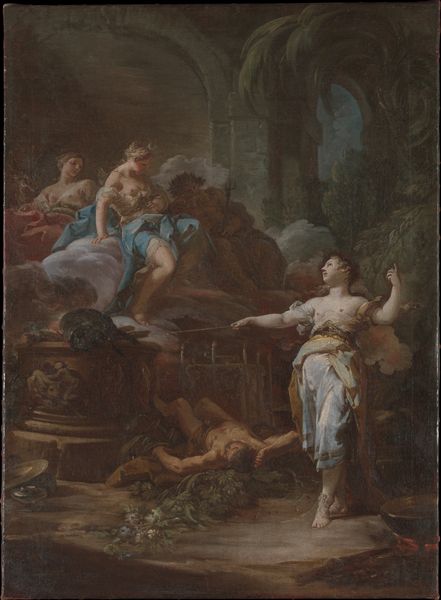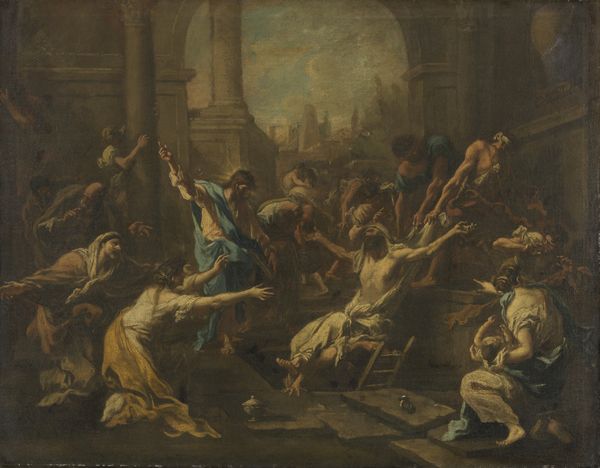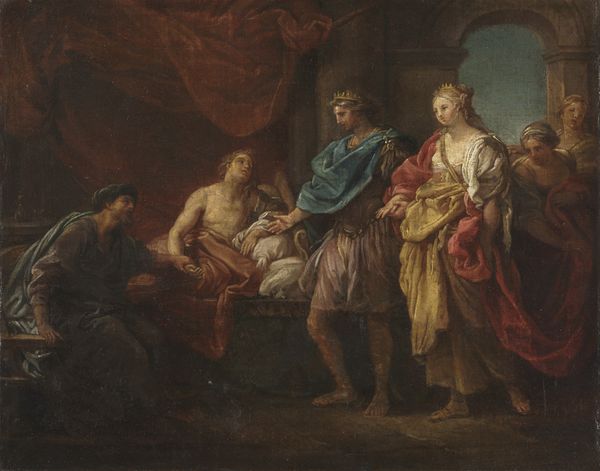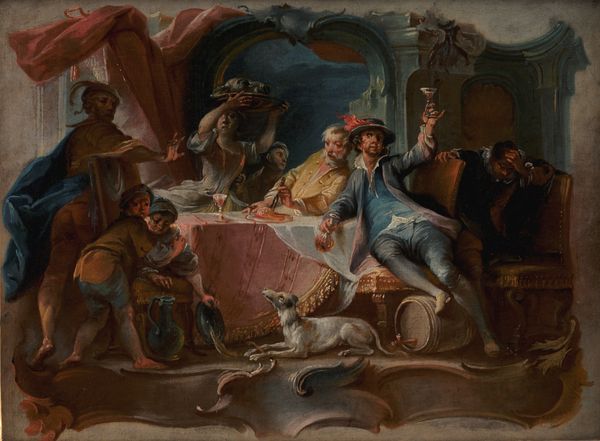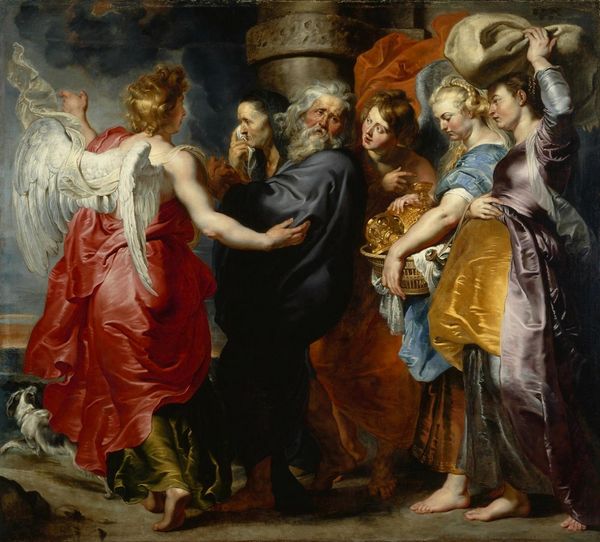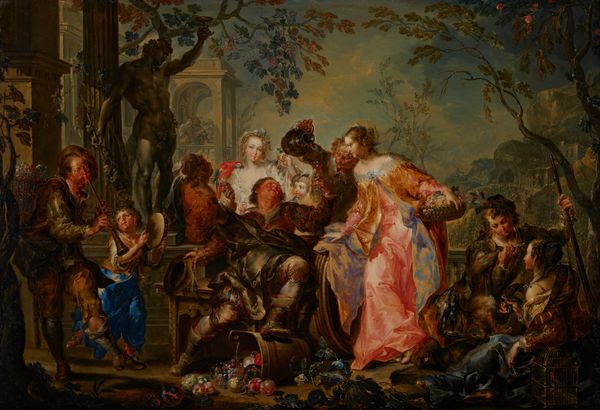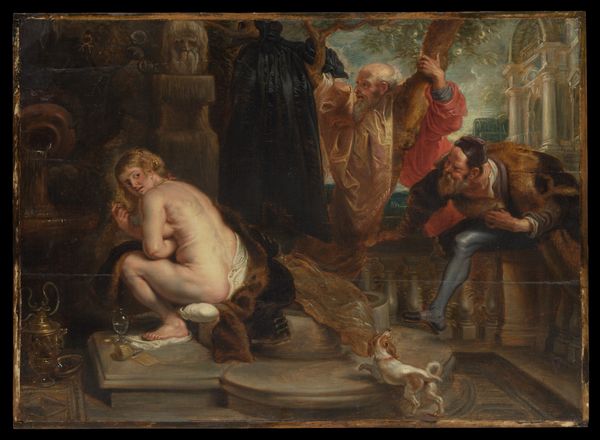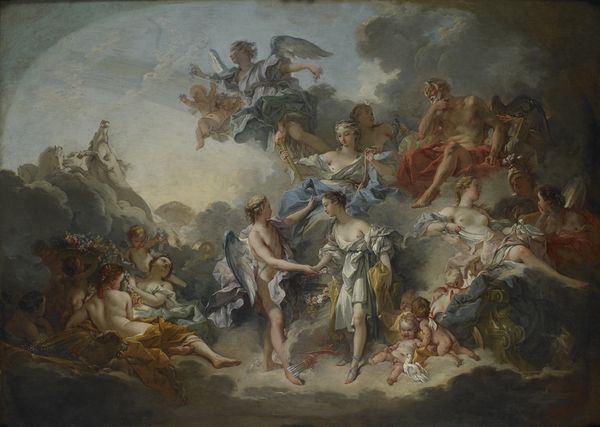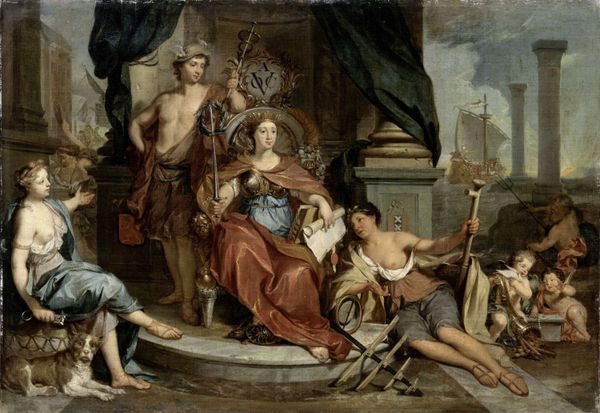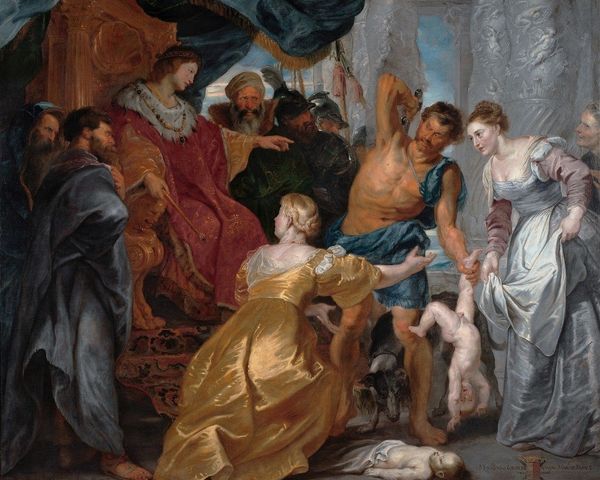
The Prodigal Son Living with Harlots 1724 - 1761
0:00
0:00
oil-paint, canvas
#
narrative-art
#
baroque
#
character art
#
oil-paint
#
figuration
#
oil painting
#
canvas
#
underpainting
#
genre-painting
#
history-painting
#
mixed media
Dimensions: 27.8 cm (height) x 38 cm (width) (Netto)
Johann Wolfgang Baumgartner painted this oil on canvas, The Prodigal Son Living with Harlots, sometime in the mid-18th century. The story of the Prodigal Son was a common subject for artists in Europe, used to teach moral lessons about repentance and forgiveness. Here, Baumgartner focuses on the moment of sin before the son's return. We can see the artist’s cultural context in the rococo style, with its ornamental design, pastel colors and playful composition. The scene depicts the son surrounded by harlots, musicians, and revelry. The setting, with its draped curtains and classical statues, seems to be a brothel, but it may also be seen as the kind of academy or studio that Baumgartner knew well as a professional artist. By painting this cautionary tale, Baumgartner was perhaps commenting on the art world of his own time and place. Historians consult a wide range of resources to study the moral values of the 18th century and to compare artistic portrayals of this popular parable. Through this research, we gain a deeper understanding of art's role as a reflection and critique of social norms.
Comments
statensmuseumforkunst almost 2 years ago
⋮
In Baumgartners painting depicting the biblical tale, the Prodigal Son does not yet know that he is lost. Engrossed with the charms of women, wine, and music he pays no heed to the dark side of debauchery. In his small oil painting depicting the biblical tale about the prodigal son Baumgartner not only used the rocaille as a frame, but as a motif in itself. The rocaille, a type of ornament typical of the Rococo, winds its way into the architectural setting of the scene, dissolving stone niches and intermingling with the food of the balustrade. As a child of the waves, sister to the seashell and twin to the corals the rocaille feels right at home within Baumgartner’s pastel-hued universe where the prodigal son does not yet know that he is lost. Engrossed with the charms of women, wine, and music he pays no heed to the dark side of debauchery. Johann Wolfgang Baumgartner’s career was nothing if not versatile. First he was apprenticed as a blacksmith, then as a glass painter and a muralist. Posterity knows him as a creator of large-scale decorative work for churches where frescoes merge seamlessly with the Rococo architecture of the altarpieces. Baumgartner was also a prolific supplier of drawn and painted images for the major printmakers in the city of Augsburg. These printmakers issued many series depicting edifying biblical tales such The Prodigal Son, or calendars featuring some of the countless martyrs of Christianity.
Join the conversation
Join millions of artists and users on Artera today and experience the ultimate creative platform.

